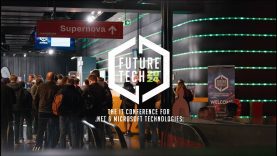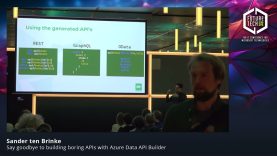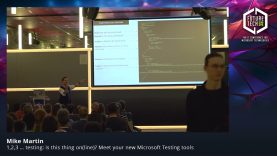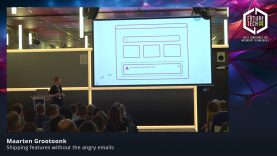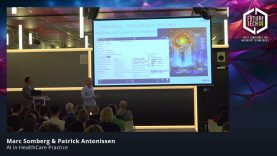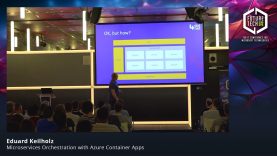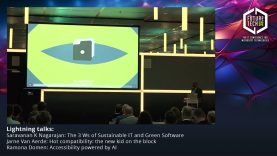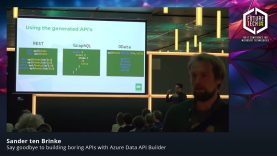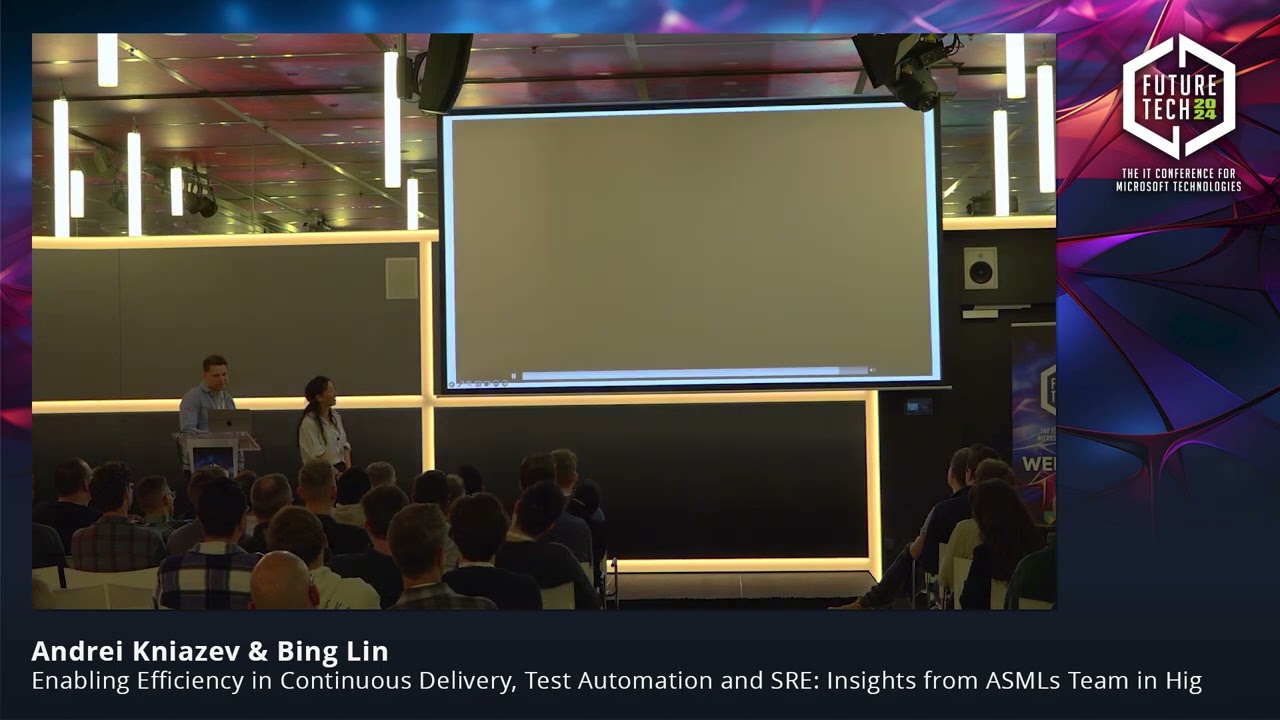
Future Tech 2024: Enabling Efficiency in Continuous Delivery – Andrei Kniazev & Bing Lin
Our apologies, due to technical issues, half of the session was not recorded well enough to be published. Enabling Efficiency in Continuous Delivery, Test Automation and SRE: Insights from ASMLs Team in Hig Authors: Bing Lin and Andrei Kniazev Keywords: C#, .NET, Azure Functions, Azure Kubernetes, ASML, Continuous Delivery, Test Automation, Microsoft Azure, High-Load Environments, Software Quality, DevOps. Introduction: In ASML, as the world’s supplier to the semiconductor industry, software development, agility, speed, and reliability have become pivotal factors in ensuring a competitive edge and meeting its customer’s expectations. We are working on ASML’s machine data ingestion solution, which processes signals generated from machines on customer sites into the Azure cloud. The terabytes of incoming data per day are crucial for diagnosis and maintenance of the machines. Our session will delve into the journey of implementing Continuous Delivery in this high-load project. Continuous Delivery (CD) stands as a cornerstone in this demanding environment, offering a paradigm shift in how software is developed, tested, and delivered. As we navigate through the various phases of this journey, both from the perspective of an ASML engineer and an external DevOps consultant, we are exploring the transformative impact on the technical and cultural aspects of the development process. From fostering a culture of alignment to leveraging operational data insights and achieving a seamless test automation focus, our narrative will shed light on these strategies and practices. Part I – About Alignment Phase: In the alignment phase, we explore ways to reshape the team’s culture by engaging in alignment sessions and discussions on the guiding principles that shape our approach to software development. We discovered the hidden cost of “work in progress” and onboarded a “shared quality framework” that underpins our software-building processes. Part II – Migration Process: This section will address technical hurdles, such as transitioning from Git flow to a trunk-based approach and restructuring pipelines to align with continuous delivery across multiple projects. Additionally, we will discuss how a maturity matrix can assist your team in defining quality enhancements for your project and involving stakeholders in this process. Part III – SRE and Operational Data: Currently, our operational data is instrumental in addressing business inquiries. However, its untapped potential lies in illuminating the quality of our solution. We want to dive into the question of what operation data can tell us about quality and how we can leverage it to improve our processes. Part IV – Test Automation Focus: Discover how we make writing tests for developers not just a task but also a comfortable and pleasant experience. Part V – Achieving Continuous Delivery and What Is Next: Results and a glimpse into the future: what comes next after achieving Continuous Delivery? Any plans for further improvements or new initiatives? Why is this session interesting? This session captures interest by presenting a narrative from two viewpoints: that of a software engineer and a DevOps consultant. It offers a blend of tangible engineering solutions, such as detailing the establishment of a highly practical setup for integration tests for high-load computations. Additionally, it delves into cultural and management dimensions involved in transitioning to Continuous Delivery and SRE, including aspects like consensus on the definition of done and the value creation process for the business.



